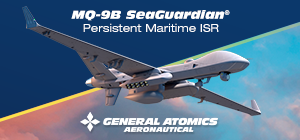
Airbus carried out cargo handling demonstrators for the USMC at Station New River and Base Camp Lejeune, using a mock-up of its proposed uncrewed LAKOTA derivative helicopter to demonstrate its suitability for the Marines’s needs for transporting tactical equipment autonomously across contested domains during expeditionary advanced base operations.
Airbus has been handed funding back in May to develop the concept as part of the USMC Aerial Logistics Connector Rapid Prototyping Program, alongside Sikorsky. Airbus is proposing a rather radical redevelopment of the existing LAKOTA helicopter which completely eliminates the cockpit in favour of fitting large clamshell doors, maximizing not only the internal space for cargo but the options for its handling, loading and unloading.
The LAKOTA already has large clamshell doors in the back, under the tail boom, so would become in some ways a 'roll on, roll off' cargo carrier.
While the USMC specifically does not employ the LAKOTA, the UH-72A serves as the US army’s primary helicopter trainer, with some 223 units in service. In addition to those, some 212 UH-72As and 18 updated UH-72Bs fill operational, homeland roles with the Army National Guard. Besides, the UH-72 Lakota is the military development of the successful and widely used EC145 commercial helicopter. It measures 43 feet (13 meters) long and has a rotor diameter of 36 feet (11 meters).
The aircraft is powered by twin Turbomeca ARRIEL engines with 738 horsepower each for a maximum speed of 145 knots (167 miles/289 kilometers per hour) and a range of 370 nautical miles (685 kilometers). The UH-72A can carry up to nine personnel or up to 3,953 pounds (1,793 kilograms) of payload and can reach an altitude of about 18,000 feet (5,486 meters). Work and demonstrations with the mock-up will continue into 2025 with further demos with the USMC to refine the concept, ahead of the possible, but not yet certain, production of a flying prototype. This is an area where Airbus 'lags' in comparison to rival Sikorsky, which has already flown a modified UH-60A BLACK HAWK turned into a optionally manned machine which can do without any crew aboard. On the other hand, Sikorsky has not significantly altered the BLACK HAWK form and function, electing to retain the cockpit and the possibility to have a human crew in place, underlining a significantly different approach to the problem.








.png)
